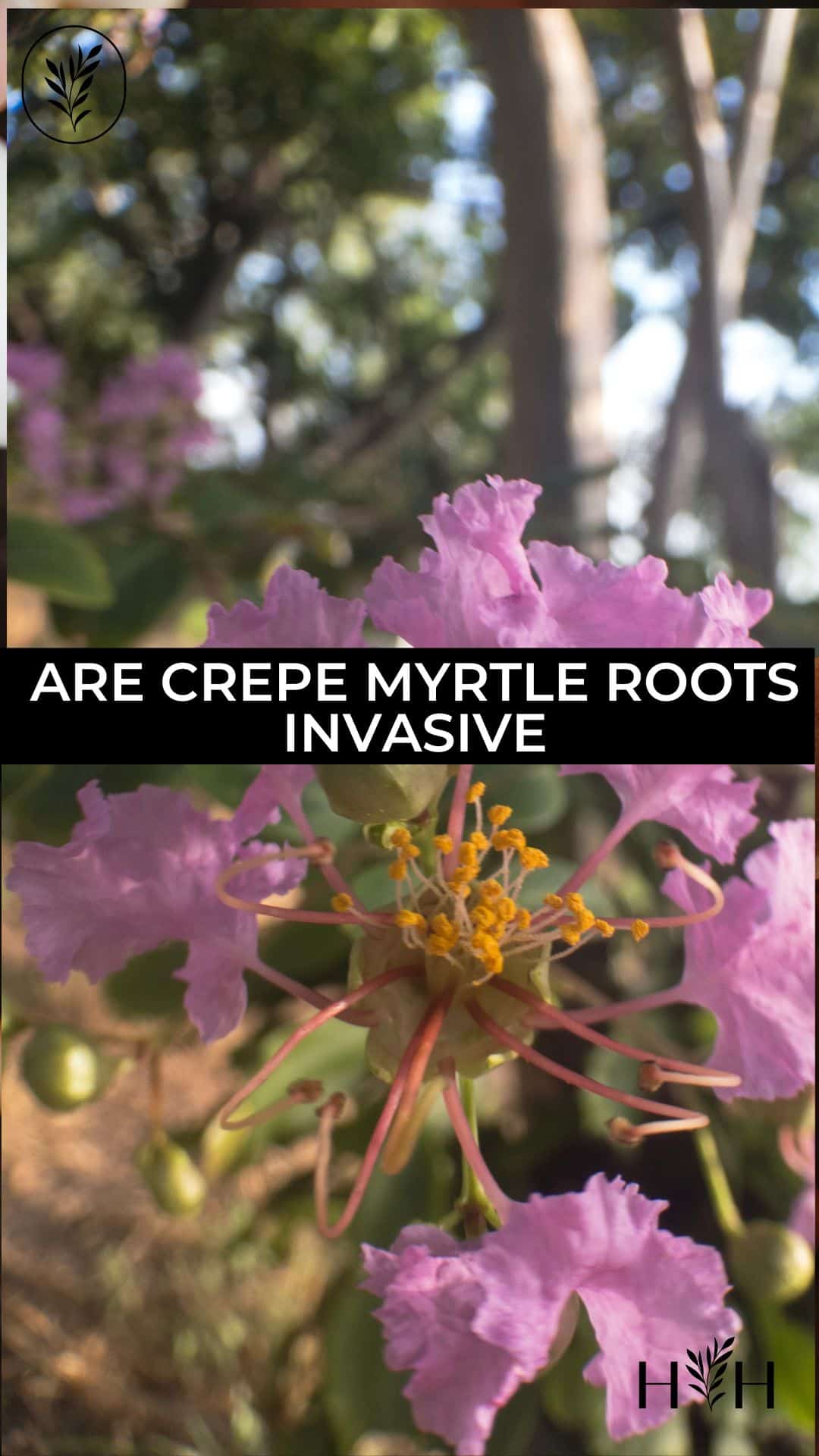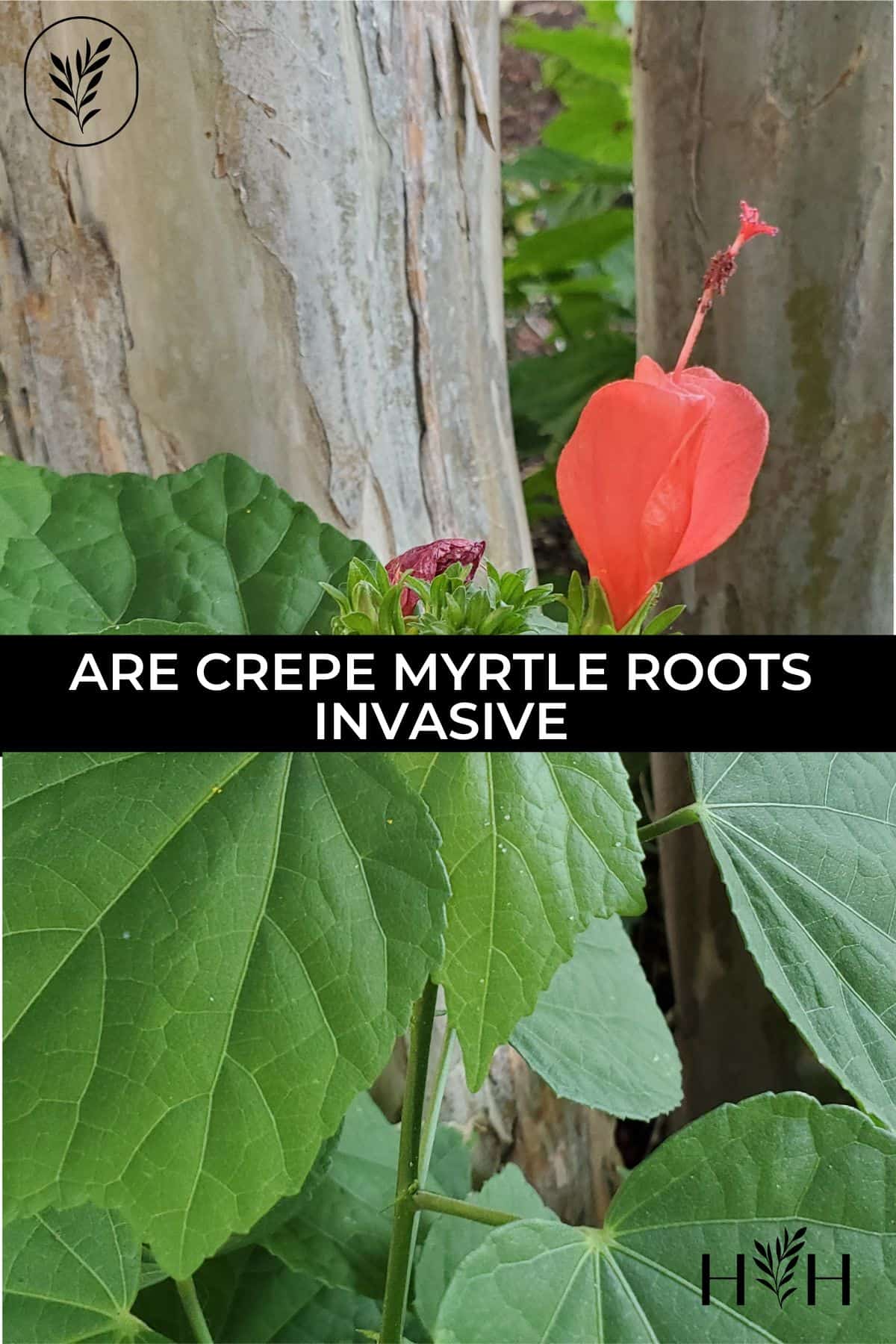Wondering if crepe myrtle roots are invasive? This question is common as these plants are often placed near sidewalks and structures.
Crepe myrtle roots are typically not considered invasive. These plants are commonly used as street trees beside paved roads and sidewalks. The roots are net-like and tend to grow in a flat dish within a few feet of the surface. The roots often reach out past the canopy’s drip line but are not overly aggressive. These tall flowering shrubs are more likely to be considered invasive due to their ability to re-seed themselves rather than their root systems.
Read on to learn all about crepe myrtle roots and landscape planning.

Are crepe myrtle roots invasive?
The crepe myrtle tree (Lagerstroemia indica) has been popular in the South for generations. And there are even crepe myrtle varieties bred to survive harsh winters. These deciduous, fast-growing small trees grow into lush green giants that are as beautiful in flower as they are in leaf, and their striking bark and colorful flowers complement any yard or garden space.
While crepe myrtle plants do have extensive root systems, they are typically not invasive. These plants grow many fine roots in a net-like fibrous root system. They do not develop a thick vertical taproot.
Crepe myrtle roots do spread quite far beyond the diameter of the branches. This can lead to questions as to whether or not these plants have aggressive roots. While these plants do grow a large number of thin long roots, the roots tend to stay close to the surface, extending beyond the aboveground canopy of leaves.
“Crape myrtle do not have invasive root systems, which may be one reason they are used as sidewalk margin trees. They don’t lift the sidewalks as so many other trees do.”
Penny Pawl, UC Master Gardener of Napa County
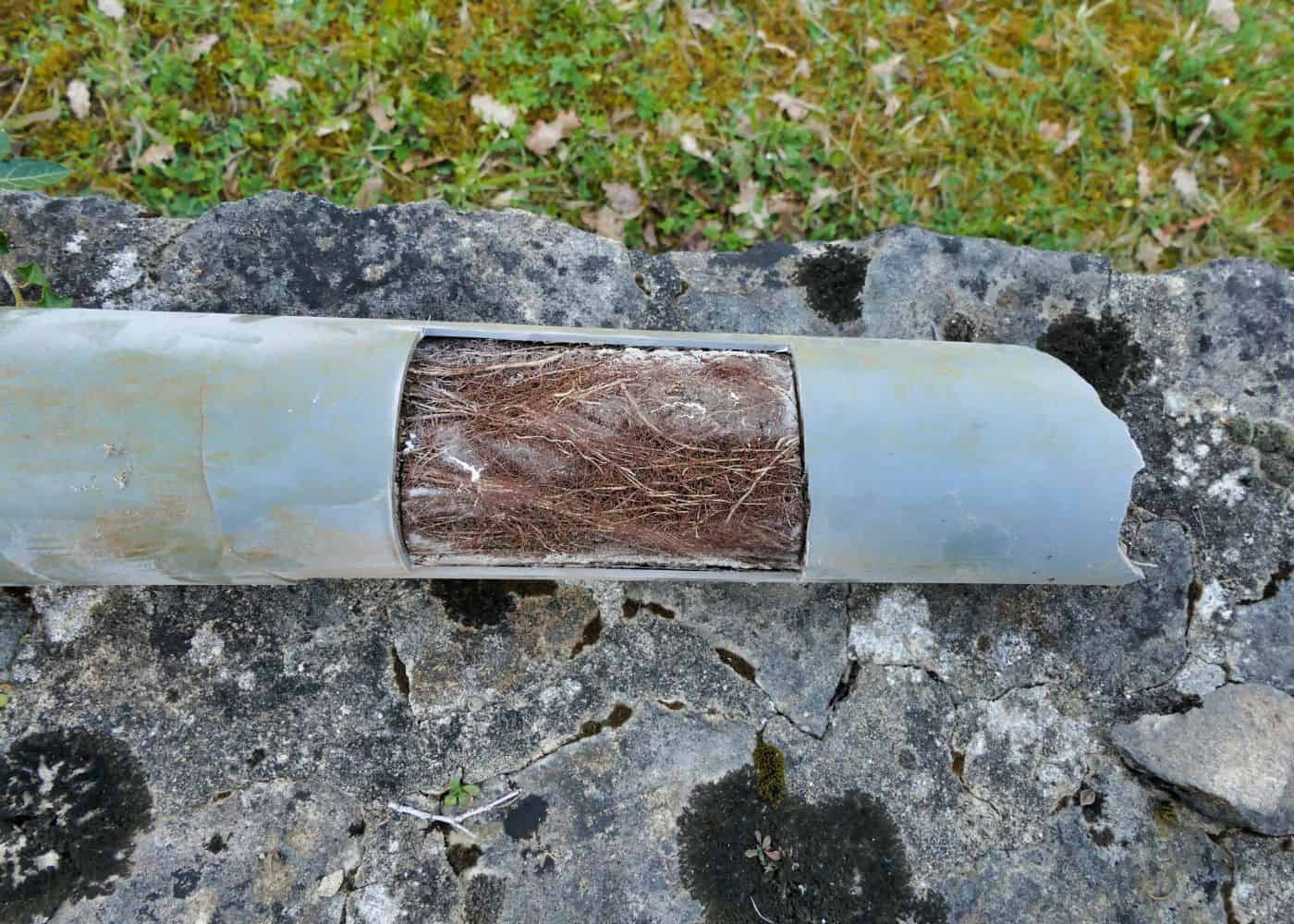
What are invasive roots?
Invasive roots are overly aggressive thick roots that search for water and apply destructive force to structures in their attempt to collect as much water as possible. Invasive roots can damage important utilities like sewer pipes, leading to expensive repairs. They can also crack sidewalks or even building foundations if planted too closely.
Crepe myrtles don’t have overly aggressive roots. The Crepe myrtle has shallow lateral roots. The plants grow a large number of thin, weak roots rather than just a few big thick roots.
“Roots: surface roots are usually not a problem”
US Forest Service Lagerstroemia indica, Crape-Myrtle
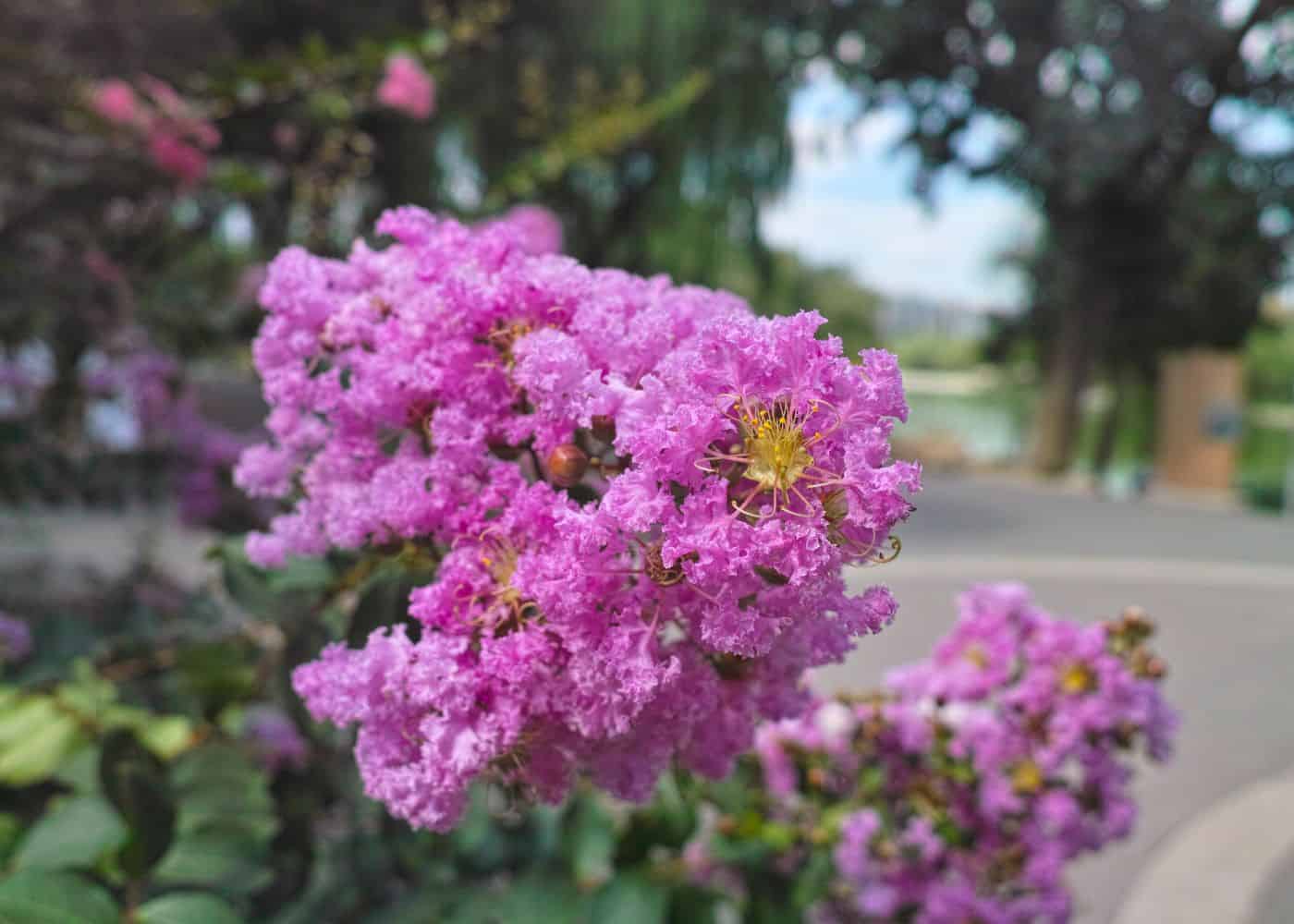
A beautiful tree with low maintenance requirements
The Crepe Myrtle tree is a beautiful flowering tree used to line streets and beautify neighborhoods. It requires very little upkeep while offering plenty of summer color.
If you are considering planting a Crap Myrtle, it’s crucial to know they don’t have invasive roots like some other trees like willows or birch trees. Due to their non-invasive root systems, crape myrtles are very popular sidewalk margin trees.
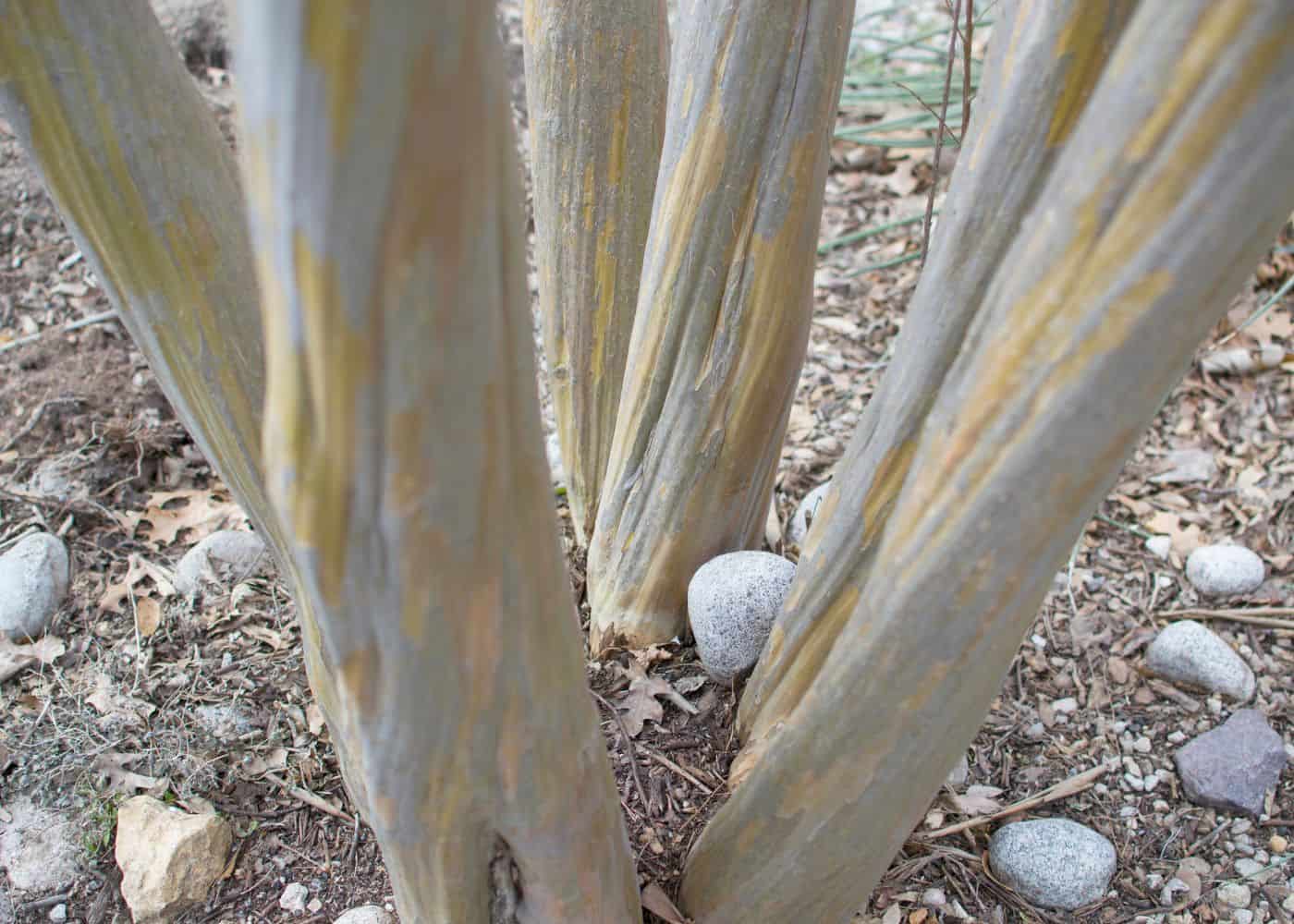
Where can crepe myrtles be planted?
Crepe Myrtle is often planted in flower beds because they are easy to care for and have a small root system, meaning less opportunity for damage to pipes, sidewalks, or other structures. You can train a crepe myrtle into a large shrub or remove the bottom limbs to form an attractive multi-stemmed small tree.
Most varieties of crepe myrtle will grow to about 20 feet tall with a canopy spread of about 12 feet wide. That said, there are some newer dwarf varieties that are well-suited to front yards and smaller landscape spaces. These shrubs have dark green leaves and beautiful flowers in red, white, pink, or purple.
Planting crepe myrtle trees
Mississippi State University says any time of year is acceptable to plant a Crepe Myrtle in containers. Plant Crepe Myrtles in the fall or early spring gives the roots time to take root before the summer heat arrives. In the winter season, install bare-root plants.
Good soil preparation is essential for the growth and flowering of crape myrtle. Dig a big hole at least twice as wide as the root ball to prepare. Backfill with dirt from the pit after breaking clods up, and remove any rocks or other debris.
After planting, water to settle the soil and roots. Mulch the area to keep moisture in the soil, control weed growth, and protect the roots from rapidly changing temperatures. The University of Georgia recommends covering the soil with three to five inches of pine straw, pine bark, chopped-up hardwood mulch, or chopped-up leaves.
Soil conditions
Although it thrives in full sun (at least six hours) and well-drained, rich soil, the roots of crepe myrtle can withstand less welcoming locations once established. If watered frequently until established, these plants can thrive even in confined soil spaces in metropolitan areas such as boulevards, parking lots, tree wells, and pavement.
After becoming established, crepe myrtle roots often become drought-tolerant. According to the University of Florida, they thrive in alkaline and clay soil. Some tree blossoms tend to discolor paint, though, so don’t plant one near your house, car, parking spot, or driveway.
Pests and disease
There aren’t many insect pests that cause problems for crepe myrtle. These shrubs can sometimes be attacked by aphids. Ants are sometimes visible farming the aphids for their “honeydew” secretions. Spray the aphids off regularly with a sharp stream of water to discourage them from making a home in your plant.
Crepe myrtles may also get powdery mildew damage. There are new Crepe Myrtles that are aphid and powdery mildew-resistant, so check for a resistant cultivar if you are planting a new tree.
Crepe myrtle cultivars
There are crepe myrtles appropriate for most circumstances. Some dwarf crepe myrtles can grow well in pots, while others can reach heights of more than 20 feet.
While some crepe myrtle trees have a more spreading style, some cultivars have a tall, narrow shape. In recent years, private, state, and national financed breeding initiatives have increased the qualities of bark, flower color, fall color, plant growth, shape, and disease resistance.
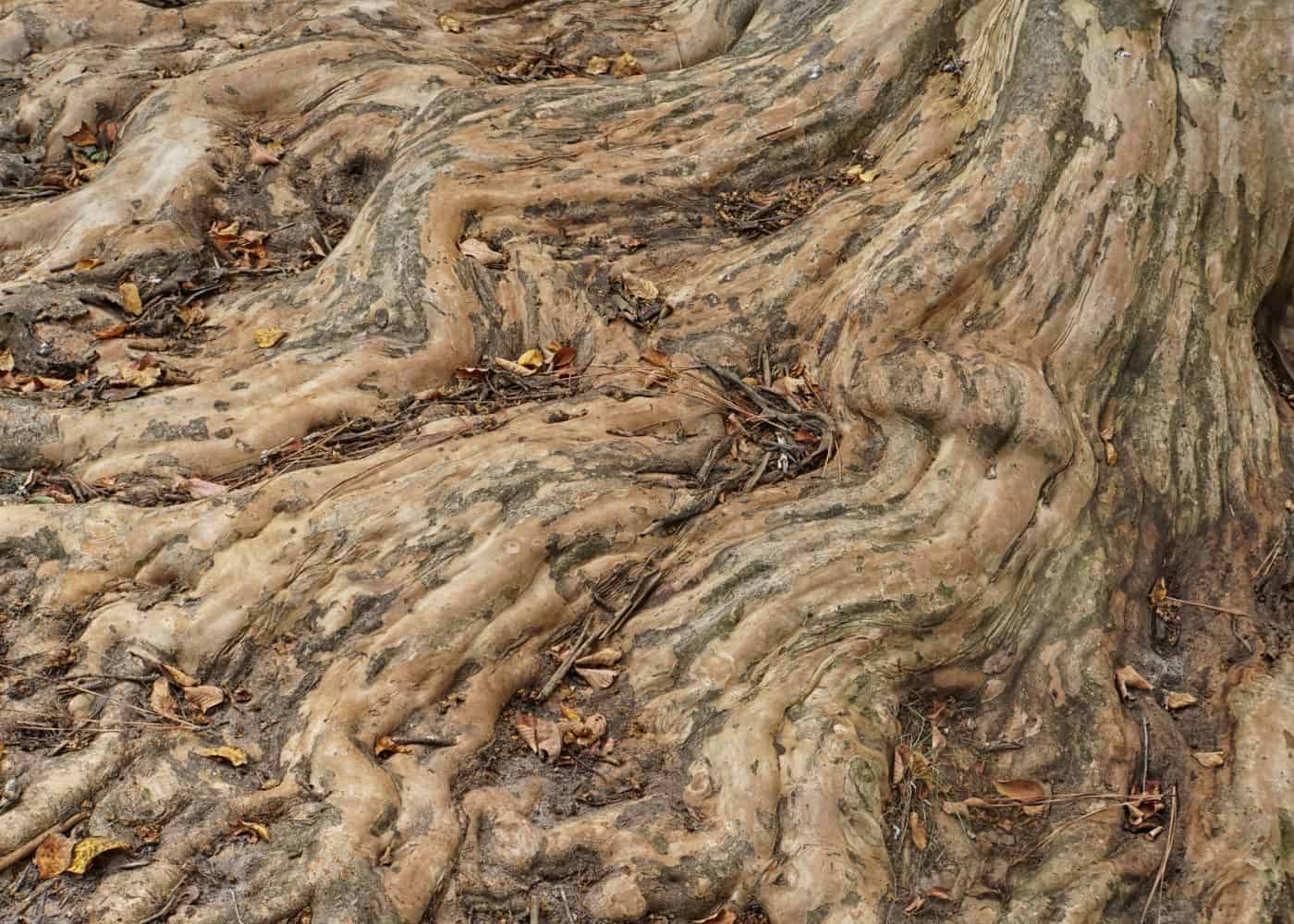
FAQs
How deep do crepe myrtle roots grow?
The majority of the roots of many crepe myrtles don’t go much deeper than a few feet. These plants don’t have deep taproots. Dwarf cultivars will have much smaller root systems than larger varieties, but almost all these plants will have roots that extend wider than the aboveground branches.
Can crepe myrtle roots damage pipes?
Crepe myrtle roots could certainly damage pipes, but they are much less likely than some other tree species (like willow, birch, or oak) to do so. These plants have net-like fibrous roots that provide coverage of a large volume of soil rather than growing only a few thick taproots directly into water sources. That said, a tree that is not watered regularly may grow fine roots around irrigation lines in search of water.
References
- US Forest Service
- University of Arizona
- Louisiana State University College of Agriculture
- Invasive Plant Atlas of the United States, Lagerstroemia indica L. (crapemyrtle)



